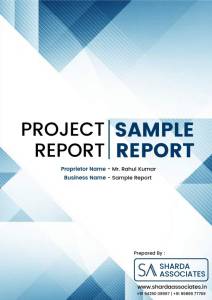Project report for Ambulance Manufacturing
Introduction
Project report for Ambulance Manufacturing is as follows.
An ambulance is a specialized vehicle designed to provide emergency medical care and transport for patients who require urgent medical attention. Ambulances are typically staffed by trained medical personnel, such as emergency medical technicians (EMTs) or paramedics, who are equipped with the necessary medical equipment to stabilize and treat patients on-site or during transport to a hospital or medical facility.
Ambulances come in different shapes and sizes, depending on the needs of the community they serve. They may be basic, with minimal equipment and staff, or advanced, with more specialized equipment and a larger medical team. Ambulances are typically equipped with medical supplies such as oxygen tanks, defibrillators, and cardiac monitors, as well as a variety of drugs and medications to treat a range of conditions.
The primary function of an ambulance is to provide emergency medical care and transport for patients who require immediate attention due to illness, injury, or trauma. This includes responding to emergency calls and providing on-site medical treatment, as well as transporting patients to hospitals or medical facilities for further care.
In addition to emergency medical services, some ambulances also provide non-emergency medical transportation services for patients who require transport to medical appointments or other medical services.
In summary, an ambulance is a critical component of emergency medical services, providing life-saving care and transportation for patients in need. With trained medical personnel and specialized equipment, ambulances play a vital role in ensuring that patients receive prompt and appropriate medical care, whether on-site or during transport to a medical facility.
Market Potential Of Ambulance Manufacturing
The ambulance manufacturing industry in India has experienced significant growth over the years due to the increasing demand for emergency medical services across the country. The market size of ambulance manufacturing in India is estimated to be around INR 1,500 crores (approximately USD 200 million) and is expected to grow at a CAGR of 7.5% between 2021 and 2026.
The government of India has been actively promoting the development of healthcare infrastructure in the country, including emergency medical services, which has boosted the demand for ambulances. In addition, the growing awareness of the importance of quick access to emergency medical care has led to an increase in demand for ambulances from both the public and private sectors.
The Indian ambulance manufacturing industry is largely dominated by domestic players, with companies like Force Motors, Tata Motors, and Mahindra & Mahindra holding a significant market share. These companies offer a range of ambulance models, including basic life support (BLS), advanced life support (ALS), and critical care ambulances, to cater to the varying needs of the healthcare sector.
The demand for ambulances is expected to continue to grow in the coming years due to the increasing incidence of medical emergencies, particularly in rural areas where healthcare infrastructure is lacking. Moreover, the government’s focus on improving healthcare facilities and accessibility, especially in the wake of the COVID-19 pandemic, is likely to further drive the demand for ambulances in the country.
In conclusion, the market size of ambulance manufacturing in India is expected to continue growing, driven by government initiatives, increasing awareness about emergency medical services, and the growing need for healthcare infrastructure. Domestic players are likely to continue dominating the industry, and the focus on innovation and customization to cater to specific needs is likely to be a key driver of growth.
Project Report Sample On Ambulance Manufacturing
Need Help?
Create 100% Bankable Project Report

